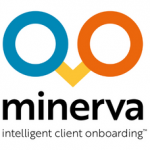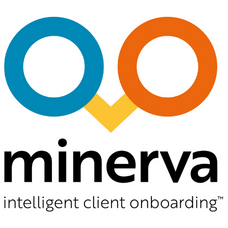Minerva: HM Land Registry digital identity – explained
Despite the coronavirus pandemic having unprecedented ramifications across the globe, it has proved to be a positive catalyst with technological projects being accelerated in the conveyancing landscape.
Last year HM Land Registry (HMLR) recognised the urgent need for a more secure, efficient, easy and convenient means of identifying those parties involved in a property transaction.
In March 2021 innovative technology was launched that would transform the conveyancing industry and help law firms and improve client experience. Leading the way for secure digital identity checks, HMLR’s first Identity Standard was introduced, offering law firms and conveyancers a ‘Safe Harbour’ to utilise when verifying their clients’ identity. HMLR’s ‘promise’ is that they would not seek recourse against conveyancers who comply with the standard in the event their client was not who they claimed to be.
Since the launch there has been a lot of technical jargon online about the Identity Standard which can feel confusing, but understanding the real benefits of the technology in layman terms can be helpful to conveyancers and law firms.
Understanding the lingo
The ‘Safe Harbour’ higher standard is made up of four requirements, where the first three must be carried out to meet the criteria. It provides guidance on a robust level of digital identity checks, involving biometric and cryptographic technology to legally verify a person or persons are genuine when buying or selling properties.
The new standard requirements will not only significantly streamline the conveyancing process with digital identity checks but will reduce the risk of fraud, and make transactions an easier and faster experience – whilst driving the sector towards a clear set of standards in digital ID.
Verification of someone’s identity has always been an area of concern, but due to the pandemic causing an extraordinary challenging property market, industry experts knew an improved system needed to emerge to tackle conveyancing fraud. A Solicitors Regulation Authority (SRA) Board Report, which covers the year ending October 2020, revealed vendor fraud as the ‘key money laundering’ activity in 2020 – with findings showing conveyancing fraud as the main suspicious activity worth £200m.
By harnessing emerging digital identity verification tools, coupled with a more robust standard for identity checks, it has allowed law firms/conveyancers to confidently verify their client’s identity online swiftly and conveniently.
To understand how the Digital Identity Standard works let’s look at the technology used within the system.
What is facial recognition?
It goes beyond face recognition technology through the FaceID used to unlock phones which many people are familiar with. Facial recognition is a category of biometric security to confirm an individual’s identity using their face. Biometric security is an identification and authentication device that uses automated methods of verifying or recognising the identity of a living person based on a physiological or behavioural characteristic. These characteristics include facial images, fingerprints, iris and voice recognition.
Facial recognition systems can be used to identify people in photos, videos, or in real-time.
As all conveyancers need to ensure the person, they are acting for is who they say they are, clients will need to provide evidence that incorporates biometric and cryptographic capabilities that can be checked. An example of this is an electronically held photograph which can be used for biometric facial recognition, including biometric passports that meet the ICAP specifications for e-passports. (ICAP – Internet Content Adaptation Protocol – These are the specifications that help ensure process through web servers.)
What is NFC?
NFC stands for ‘Near Field Communication’ and just as its name implies, it enables short-range communication between compatible devices.
NFC is a mainstream wireless technology that reads the Radio Frequency Identification (RFID) chip embedded in passports. An RFID chip is a very small memory chip located inside the cover of all passports issued since 2007. RFID chips are used so that if a passport ever gets stolen and someone tries to change the photo or personal information, when scanning the passport, it would flag up that the information does not match up.
This check is the most secure and reliable method to determine whether it is a genuine government document. Plus, all the data is securely stored in the cloud, keeping all information safe and adhering to GDPR guidelines.
What is the Private Key within the NFC?
A Private Key, also known as a signing key or secret key, is an encrypted code embedded in a passport which contains all private information of the holder. This unique identifier is held in an encrypted format and used to identify and verify individual persons.
What is encryption or cryptography?
Encryption is the method by which information is converted into secret code that hides the information’s true meaning. The science of encrypting and decrypting information is called cryptography. In computing, unencrypted data is also known as plaintext, and encrypted data is called ciphertext.
What is a Machine Readable Zone?
Machine Readable Zone (MRZ) is a particular area in an I.D. document (such as passport with the data on the identity page encoded in optical character recognition) that encloses the document holder’s personal data.
What does a liveness test mean?
Liveness detection in biometrics is the ability of a system to detect and test if a fingerprint or face (or other biometrics) is physically real (from a live person present at the point of capture) or fake (from a spoof artifact or lifeless body part).
Minerva encourages the use of digital technology in identity verification and has provided a guide to the Safe Harbour Standard here.
Minerva’s intelligent client onboarding system connects law firms with clients by way of an intuitive, user friendly and business efficient portal – which revolutionises the experience of both lawyers and customers. The powerful tool has been developed alongside large leading law firms across the country, which means the system is ready to help all law firms reap the rewards of great client experience and be fully compliant – which is key to good business practice.
Minerva’s secure, cloud based, client centred technology solution can be integrated with your case management system for seamless full firm management. It will solve all compliance issues and enhance the value of your business by streamlining the process, relieving the burden of enhanced due diligence and client due diligence to mitigate risk.
Let Minerva do the hard work and leave the technology to them! Say hello to Minerva’s friendly team of experts. Book a no-obligation today and find out more here.



